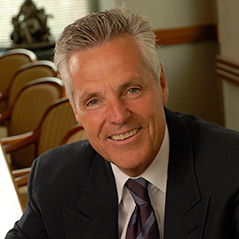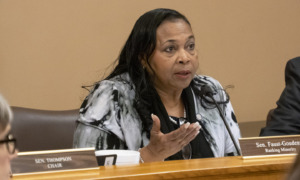 While foster children’s well-being has long been a federally mandated objective, along with safety and permanency, it is the goal we are farthest from achieving. Government agencies and child welfare organizations have been reasonably effective in protecting children from harm and in placing them in long-term homes.
While foster children’s well-being has long been a federally mandated objective, along with safety and permanency, it is the goal we are farthest from achieving. Government agencies and child welfare organizations have been reasonably effective in protecting children from harm and in placing them in long-term homes.
However, only if we are successful in ensuring their well-being will we truly enable them to rise above their circumstances.
In New York, Gladys Carrion, the commissioner of the Administration for Children’s Services, has challenged those of us working in the field to focus on well-being, and it’s a challenge we are embracing. The key, in our opinion, is education. Our country has seen many leaders overcome poverty, mental health issues or other obstacles — through education. But without an adequate education, these children will not have the skills they need to earn a living, support a family and lead productive lives.
Without adequate education, it is far more likely an individual will enter the juvenile justice system and struggle with unplanned pregnancies, drug abuse and long-term dependence on government-funded services for food, health care and housing.
The issues surrounding education for children in foster care and in child welfare generally are significant. But there are certain things we have learned that provide the beginnings of a roadmap.
We know that early education programs like pre-K, get results. But it’s not enough. We need to expand our Head Start and Early Head Start programs and make them more available in communities with a high prevalence of at-risk children.
We know that children in child welfare require an educational environment that is tailored to address their unique needs. Seven years ago, The New York Foundling launched Haven Academy, a K-5 charter school in the Bronx, in one of the nation’s most disadvantaged communities. Two-thirds of the children are in foster care or preventive services and one-third are from the surrounding community.
We’ve found that these children do better when:
- School design is structured around collaboration between educators and child welfare professionals;
- School culture is trauma-sensitive and teachers understand the impact that physical or psychological trauma may have had on their students;
- Students have access to advanced counseling services;
- Absentee policy includes contacting the child’s caseworker and following up with a home visit.
As a result, our students at Haven have shown an average of 1.3 years of growth per year of instruction, daily student attendance rates of at least 95 percent schoolwide and in the last two years, incidents of aggressive behaviors have declined by more than 60 percent. Our child welfare students are outpacing children in child welfare citywide by a wide margin.
However, we need to do more. Even in the type of environment we’ve created, they still are not advancing as quickly as children from the general community.
Older youths pose additional challenges. Thousands of young people nationally age out of the foster care system each year. They reach age 21 and their support systems are removed. One in four encounters the justice system and one in five becomes homeless. Only 3 percent earn college degrees.
To address this issue, with support from the Conrad N. Hilton Foundation, we’ve launched a program called Road to Success, aimed at helping youth in foster care graduate high school and succeed in college.
Each student is matched with a rigorously trained full-time tutor. They meet weekly and, in between, the tutors quiz their students via text, send reminders to do homework and write encouraging notes. This often leads to the youths forming close working relationships with their tutors.
The program also advises students on high school and college admissions, advocates for them in their schools and helps students file for financial aid.
In less than two years after the program’s inception:
- 95 percent of the participating ninth- to 11th-graders were promoted to the next grade at the end of the year;
- 80 percent are projected to graduate in four years, compared to the general population of New York City, whose four-year graduation rate is only slightly higher than 62 percent;
- In the 2014-15 academic year, the annual rate of four-year college enrollment among youth in our foster care programs has increased by 400 percent.
For those students who are not college bound, we are working with partner organizations to develop a new program that will train these youth in the type of technology skills that will ultimately qualify them for good-paying jobs.
For all the lessons we are learning through these programs, there is clearly much more to do. All of us in this field need to continue to share information, innovate and be open to new directions that can have a positive impact.
Our choice is simple: Find effective ways to educate children now or pay the price of incarceration, drug abuse, homelessness and a continuing cycle of poverty in the future.
Bill Baccaglini is president and CEO of The New York Foundling.
































